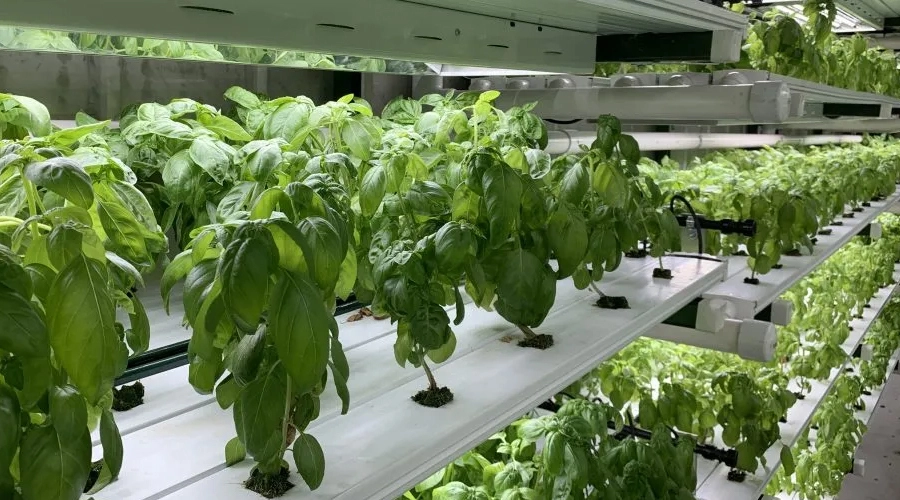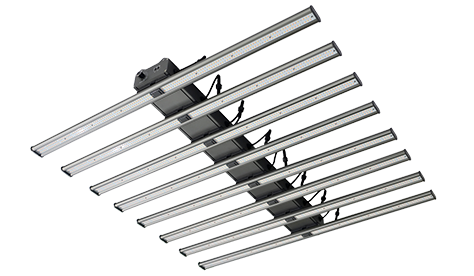Благодаря широкому применению в сельскохозяйственном секторе передовых технологий, таких как большие данные и алгоритмы искусственного интеллекта, вертикальное земледелие добилось значительного прогресса и развития как часть современной сельскохозяйственной революции.
Используя передовые биотехнологии, точные методы анализа данных и высокоавтоматизированные системы управления выращиванием, вертикальное земледелие успешно преодолело ограничения традиционного сельского хозяйства, такие как естественный солнечный свет, сезонные изменения и колебания температуры, обеспечив непрерывное и эффективное производство растений.
Эта трансформация значительно сократила потребление воды, уменьшила зависимость от ограниченных земельных ресурсов и, таким образом, опрокинула сельскохозяйственную модель, существовавшую на протяжении тысячелетий, освободив ее от ограничений природных условий.

В последние годы в Соединенных Штатах и Канаде наблюдается всплеск тепличного садоводства и домашнего фермерства, что вывело концепцию вертикального земледелия на передний план североамериканской сцены. Более того, темпы технического прогресса в этой области были удивительно быстрыми.
В то же время нельзя недооценивать огромную промышленную мощь Китая. Благодаря мощной производственной базе и высокоэффективной цепочке поставок Китай прочно зарекомендовал себя как ключевой игрок в индустриализации вертикального земледелия.
Только посмотрите на эти цифры! Североамериканский регион уже контролирует около 35% мирового рынка вертикального земледелия. Потребители стекаются к органическим продуктам, что приводит к стремительному росту спроса. По оценкам, к 2028 году рынок вертикального земледелия в Северной Америке может достичь колоссальных 5,37 миллиарда долларов, демонстрируя стремительную динамику роста.
Благодаря передовым биотехнологиям, интеллектуальным системам выращивания и технологиям интеллектуального анализа данных регион Северной Америки прочно занимает лидирующие позиции в этой гонке сельскохозяйственных технологий.
Однако даже у самой передовой технологии есть свои слабые стороны. Высокие затраты на рабочую силу и сложное управление цепочками поставок стали незначительными препятствиями на пути индустриализации вертикального земледелия в Северной Америке.
Для некоторых компаний высокая стоимость оборудования до боли очевидна, а темпы итераций кажутся медленными. Но не думайте, что они просто сидят и смотрят! Сообразительные предприятия уже давно ищут способы преодолеть эти препятствия!
Например, компания Pinnacle Food в Канаде в прошлом году заключила партнерское соглашение с китайской компанией Banjia Technology, объединив их интеллектуальные сельскохозяйственные технологии с китайским производственным мастерством.

Благодаря этому сказочному сотрудничеству производство большого количества высококачественного оборудования и расходных материалов перешло в китайскую цепочку поставок.
Генеральный директор PF также отметил, что обрабатывающая промышленность Китая является одной из лучших в мире, с надежной и эффективной цепочкой поставок.
Сотрудничество оказалось весьма эффективным: оно не только улучшило масштабируемость и эффективность производства продукции, но и ускорило темпы обновления оборудования. Самое главное, это существенно снизило затраты!
В конечном счете, хотя Северная Америка может стать лидером в вертикальном сельском хозяйстве, постоянно обновляя отраслевые рекорды с помощью технологических инноваций и показывая пример модернизации сельского хозяйства во всем мире, истинная возможность для индустриализации и значительного развития вертикального сельского хозяйства может лежать в плодородной почве Китая.
От селекции семян до производства, переработки, транспортировки и конечной продажи Китай может похвастаться комплексной системой цепочки поставок, которая эффективно контролирует производственные затраты и повышает конкурентоспособность на рынке.
Более того, первоклассная инфраструктура Китая, включая современные здания, современное оборудование и экологически чистую энергию, создает отличные условия для создания и роста вертикального сельского хозяйства.
Мало того, все большее число гигантов розничной торговли также решаются на инвестиции в вертикальное сельское хозяйство.
Дэн Нильсен из компании Seasony однажды поделился на LinkedIn: “В будущей волне вертикального фермерства эти крупные сетевые ритейлеры, скорее всего, превратятся в ведущих инвесторов в вертикальные фермы.” Возьмем, к примеру, норвежскую компанию Coop, которая в конце 2023 года объявила о сотрудничестве с местной компанией Avisomo для строительства нового завода.
В Великобритании Ocado (которая инвестировала в Infinite Farms в 2022 году и ранее инвестировала в Jones Food Company), Walmart сделала ставку на Plenty в 2022 году и бельгийская Colruyt Group (которая в этом году запустила новую систему, разработанную совместно с MechaTronix). Это яркие примеры того, как гиганты розничной торговли решаются заняться вертикальным сельским хозяйством.
Когда дело доходит до проблемы затрат на вертикальное земледелие, она действительно может быть значительной, но ее можно решить путем балансирования различных аспектов цепочки создания стоимости. Либо потребители платят за более высокое качество, либо, поскольку инвестиции составляют лишь небольшую часть конечной цены, как, например, в высококлассных ресторанах, потребители более терпимы к этому.
Когда ритейлеры глубоко вовлечены в вертикальную интеграцию, они готовы платить немного больше, потому что это позволяет им получить кусок пирога поставщика, пусть это и небольшая сумма, но она все равно считается внутренним доходом.
Таким образом, сельскохозяйственные технологии процветают во всем мире, и в будущем, используя свою надежную и эффективную сеть цепочек поставок, а также все более сложную инфраструктуру, Китай имеет потенциал для тесного сотрудничества с передовыми международными предприятиями в области вертикального земледелия.

Это сотрудничество могло бы способствовать переходу вертикального земледелия к большей индустриализации и масштабируемости.
Хотите оставаться в тренде зеленого образа жизни и получать удовольствие от выращивания растений? Тогда вы точно не сможете пропустить наше Вертикальный гидропонный сад SG40! Это не просто компактный и удобный инструмент для домашнего сада, но и секретное оружие, позволяющее стать современным городским фермером.
Это похоже на миниатюрную фабрику мечты о растениях, которую можно разместить на балконе, в гостиной или офисе, что позволит вам отправиться в захватывающее приключение по вертикальному сельскому хозяйству в помещении. Благодаря простоте управления вы можете наслаждаться свежими, чистыми и самодостаточными урожаями фруктов и овощей, наполняя свою жизнь жизненной силой и энергией.
Присоединяйтесь к нам сейчас и используйте вертикальный гидропонный сад SG40, чтобы запустить свою мини-фабрику растений и начать замечательный эксперимент!



Джейс
Будучи менеджером по цифровому маркетингу в AUXGROW, Джейс сочетает в себе страсть к гидропонным системам и опыт в области светодиодных светильников для выращивания растений. Обладая практическим опытом и глубоким пониманием, Джейс проведет вас через мир устойчивого земледелия.





